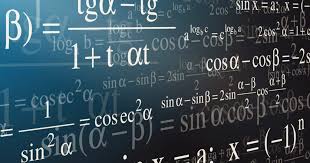Introduction
In the realm of AP Calculus BC, mastering series and their convergence properties is essential for excelling in both coursework and examinations. One pivotal concept within this topic is the Alternating Series Error Bound. This theorem not only provides a method to estimate the accuracy of partial sums of an alternating series but also ensures that students can gauge the precision of their approximations effectively. This study guide will unravel the intricacies of the Alternating Series Error Bound, offering clear definitions, practical examples, and strategic study tips to help you achieve mastery over this concept.
Definition of Alternating Series Error Bound
The Alternating Series Error Bound is a theorem in calculus that provides an estimate of the maximum possible error when approximating the sum of an infinite alternating series using a finite number of terms (partial sums). Specifically, for a convergent alternating series, the absolute error between the true sum and the partial sum is less than or equal to the absolute value of the first omitted term.
Mathematically, if we have an alternating series:
where
, the Alternating Series Error Bound Theorem states that the error
when using the first
i terms to estimate the sum
s of the series satisfies:
Key Components:
- Alternating Series: A series where the signs of the terms alternate between positive and negative.
- Convergence: The series approaches a specific value as more terms are added.
- Partial Sum (
): The sum of the first
i terms of the series.
- Error Bound: The maximum possible difference between the true sum and the partial sum.
Alternating Series Error Bound Theorem
Theorem Statement:
For a convergent alternating series:
where
an is a sequence of positive, decreasing terms that approach zero (
), the error
in approximating the sum
s using the partial sum
is bounded by the first omitted term
:
Conditions for the Theorem:
- Alternating Signs: The series alternates in sign.
- Monotonic Decrease: The absolute value of the terms decreases monotonically.
- Limit to Zero: The limit of
as
n approaches infinity is zero.
Implications:
- Error Estimation: Provides a straightforward way to estimate the maximum error in using a finite number of terms.
- Convergence Assurance: If the conditions are met, the series converges, and the partial sums approach the true sum with a predictable error margin.
5 Must Know Facts for Your Next Test
- Error Bound Formula:
- The error bound for a partial sum
of a convergent alternating series is given by the next term in the series:
- The error bound for a partial sum
- Applicability Conditions:
- The theorem only applies to alternating series that are convergent, have decreasing absolute terms, and where the terms approach zero.
- Partial Sums and Accuracy:
- Using more terms (increasing
) reduces the error bound, thereby increasing the accuracy of the approximation.
- Using more terms (increasing
- Maximal Error Estimate:
- The error bound provides a maximum possible error, meaning the actual error could be smaller but never larger.
- Comparison with Absolute Convergence:
- For absolutely convergent series, error bounds can be tighter, but the Alternating Series Error Bound is specifically tailored for conditionally convergent alternating series.
Economic and Social Implications
While the Alternating Series Error Bound is a mathematical theorem with direct applications in calculus, understanding its implications can enhance problem-solving skills and analytical thinking in various fields, including economics and engineering. Accurate error estimation is crucial in:
- Financial Modeling: Ensuring predictions and estimations remain within acceptable error margins.
- Engineering Designs: Guaranteeing that calculations meet safety and functionality standards.
- Scientific Research: Validating experimental data and theoretical models with quantified precision.
Mastering this theorem equips students with the tools to assess the reliability of their calculations and make informed decisions based on quantitative analysis.
Related Terms
Alternating Series
Definition:
A series in which the signs of the terms alternate between positive and negative, typically in the form:
Significance:
Alternating series often arise in mathematical applications where the cancellation of terms can lead to convergence even when the corresponding absolute series diverges.
Convergence
Definition:
A series is said to converge if the sequence of its partial sums approaches a specific value as the number of terms increases indefinitely.
Significance:
Determining whether a series converges is fundamental in calculus, as it affects the applicability of various theorems and the accuracy of approximations.
Partial Sum
Definition:
The sum of the first
n terms of a series, denoted as
.
Significance:
Partial sums provide approximations of the total sum of a series, and their behavior is key to understanding the convergence and error in series approximations.
Examples and Applications
Example 1: Estimating the Sum of an Alternating Series
Given Series:
Task: Estimate the sum using the first 4 terms and determine the error bound.
Solution:
- Partial Sum
s4:
- First Omitted Term
a5:
- Error Bound:
Conclusion: The true sum
s lies within:
Example 2: Practical Application in Engineering
Scenario: An engineer uses an alternating series to model the oscillations of a mechanical system. By calculating the partial sum using the first 5 terms, they need to ensure that the maximum error in their estimation does not exceed 0.05 units.
Given Series:
Task: Determine if using the first 5 terms provides an error bound within the acceptable limit.
Solution:
- First Omitted Term
a6:
- Error Bound:
Conclusion: Since
, the estimation using the first 5 terms is within the acceptable error bound.
Common Mistakes and How to Avoid Them
1. Misapplying the Theorem to Non-Alternating Series
Mistake:
Using the Alternating Series Error Bound on series that do not alternate in sign.
Solution:
Ensure that the series is truly alternating. The theorem only applies to alternating series where the signs of the terms alternate consistently.
2. Ignoring the Decreasing Nature of Terms
Mistake:
Applying the theorem to an alternating series where the absolute value of terms does not decrease monotonically.
Solution:
Verify that
is a decreasing sequence. The theorem requires
for all
.
3. Overlooking the Limit Condition
Mistake:
Assuming convergence without checking that
.
Solution:
Always confirm that the terms approach zero. If
, the series does not converge, and the theorem does not apply.
4. Confusing Error Bound with Actual Error
Mistake:
Believing that the error bound equals the actual error in approximation.
Solution:
Understand that the error bound provides a maximum possible error, but the actual error may be smaller.
5. Incorrect Calculation of Partial Sums
Mistake:
Errors in arithmetic when summing the first
n terms lead to incorrect partial sums and error estimations.
Solution:
Carefully compute each term and double-check calculations to ensure accurate partial sums.
Study Tips: Mastering Alternating Series Error Bound
Excelling in understanding the Alternating Series Error Bound requires a strategic approach to studying and analyzing its multifaceted aspects. Here are some effective study strategies to help you master this topic:
1. Understand the Theorem Thoroughly
- Key Components: Grasp the conditions under which the theorem applies—alternating signs, decreasing absolute terms, and terms approaching zero.
- Mathematical Representation: Familiarize yourself with the inequality
.
2. Practice with Diverse Examples
- Variety of Series: Work on different alternating series, including those that converge conditionally and absolutely.
- Real-World Applications: Apply the theorem to practical scenarios, such as engineering problems or financial models, to see its relevance.
3. Create Flashcards for Key Concepts
- Terms and Definitions: Include terms like partial sum, convergence, alternating series, and error bound.
- Theorem Statement: Have the theorem written clearly on one side and its conditions on the other.
4. Develop Comparative Charts
- Convergent vs. Divergent: Compare alternating series that meet the theorem’s conditions with those that do not.
- Error Bound vs. Actual Error: Illustrate scenarios where the error bound is equal to or greater than the actual error.
5. Utilize Visual Aids and Diagrams
- Graphs of Partial Sums: Plot partial sums to visualize how they approach the true sum.
- Error Bound Representation: Use shaded regions in graphs to depict the error bounds around partial sums.
6. Engage in Group Study and Discussions
- Collaborative Learning: Discuss challenging problems with peers to gain different perspectives.
- Teach Back: Try explaining the theorem to someone else to reinforce your understanding.
7. Solve Practice Problems Regularly
- Textbook Exercises: Complete problems from your textbook or online resources.
- Timed Quizzes: Simulate exam conditions by solving problems within a set time to improve speed and accuracy.
8. Review Mistakes Carefully
- Error Analysis: When you get a problem wrong, analyze where and why the mistake occurred.
- Adjust Strategies: Modify your study approach based on recurring errors to prevent them in the future.
9. Relate to Other Calculus Concepts
- Series Convergence Tests: Connect the Alternating Series Error Bound to other convergence tests like the Ratio Test or Root Test.
- Integral Applications: Explore how error bounds relate to approximations in integrals and other calculus applications.
10. Stay Consistent with Reviews
- Regular Revision: Schedule periodic reviews of the theorem and related concepts to ensure long-term retention.
- Cumulative Practice: Incorporate Alternating Series Error Bound problems into your regular study routine alongside other calculus topics.
Review Questions and Detailed Answers
Question 1: In the context of the Alternating Series Error Bound Theorem, what significance does the ‘first omitted term’ have in determining the accuracy of the estimation?
Options:
- It determines the convergence of the series
- It represents the exact value of the error
- It indicates the rate of convergence of the series
- It provides an upper bound for the magnitude of the error
Answer:
It provides an upper bound for the magnitude of the error
Explanation:
In the Alternating Series Error Bound Theorem, the first omitted term
is crucial because it sets the maximum possible error when using the partial sum
to estimate the true sum
of the series. Specifically:
This means that the absolute difference between the true sum and the partial sum is at most the value of the first omitted term. This upper bound helps in determining how many terms are needed to achieve a desired level of accuracy in the approximation.
Why the Other Options Are Incorrect:
- It determines the convergence of the series:
- Convergence is determined by the overall behavior of the series, not solely by the first omitted term.
- It represents the exact value of the error:
- The first omitted term provides an upper bound, not the exact error. The actual error could be smaller.
- It indicates the rate of convergence of the series:
- While the size of the omitted term can give some insight into convergence speed, it does not directly indicate the rate of convergence.
Question 2: How does increasing the number of terms in a partial sum affect the error bound in an alternating series?
Options:
- Increases the error bound
- Decreases the error bound
- Does not affect the error bound
- Makes the error bound unpredictable
Answer:
Decreases the error bound
Explanation:
In an alternating series, as you include more terms in your partial sum
, the first omitted term
becomes smaller. Since the error bound is directly tied to the first omitted term (
), decreasing
results in a smaller error bound. Therefore, increasing the number of terms in the partial sum enhances the accuracy of the approximation by reducing the maximum possible error.
Question 3: For the alternating series
, what is the error bound when estimating the sum using the first 4 terms?
Options:
Answer:
Explanation:
When estimating the sum of an alternating series using the first
terms, the error bound is given by the absolute value of the first omitted term, which is
.
For the given series:
- Partial Sum
: Sum of the first 4 terms.
- First Omitted Term
: The 5th term, which is
.
Thus, the error bound is:
Frequently Asked Questions (FAQs)
1. Can the Alternating Series Error Bound Theorem be used for non-alternating series?
Answer:
No, the Alternating Series Error Bound Theorem specifically applies to alternating series. For non-alternating series, different convergence and error estimation methods must be used.
2. Does a smaller first omitted term always guarantee a more accurate approximation?
Answer:
Yes, in the context of the theorem, a smaller first omitted term indicates a smaller upper bound on the error, leading to a more accurate approximation of the series sum.
3. How does the Alternating Series Test relate to the Alternating Series Error Bound Theorem?
Answer:
The Alternating Series Test determines whether an alternating series converges based on the decreasing nature of its terms and their limit approaching zero. Once convergence is established, the Alternating Series Error Bound Theorem can then be applied to estimate the error in partial sums.
4. Is the error bound always achievable in real-world applications?
Answer:
No, the error bound provided by the theorem is an upper limit. The actual error may be smaller, but it will never exceed the bound specified by the first omitted term.
5. How can I apply the Alternating Series Error Bound in my AP Calculus BC exams?
Answer:
Use the theorem to estimate the sum of an alternating series by calculating the partial sum and identifying the first omitted term. Apply the error bound to determine the range within which the true sum lies, enhancing the precision of your answers.
Conclusion
The Alternating Series Error Bound Theorem is a powerful tool in AP Calculus BC, providing a method to estimate the accuracy of partial sums in alternating series. By understanding the significance of the first omitted term and the conditions under which the theorem applies, students can confidently approach problems involving series convergence and approximation. Mastery of this theorem not only aids in academic success but also lays the groundwork for advanced mathematical and engineering applications where precise estimations are paramount.
Key Takeaways:
Error Bound Formula:
provides a straightforward way to estimate the maximum error in partial sums.
Applicability Conditions:
The theorem applies only to alternating series with decreasing absolute terms that approach zero.Partial Sum Accuracy:
Increasing the number of terms in the partial sum reduces the error bound, enhancing approximation accuracy.Practical Applications:
Accurate error estimation is crucial in fields requiring precise calculations, such as engineering and economics.Strategic Problem-Solving:
Utilizing the theorem effectively can streamline the process of solving series-related problems in exams.
By integrating the Alternating Series Error Bound into your study routine, you enhance your ability to analyze and approximate series with confidence, ensuring preparedness for your AP Calculus BC examinations and beyond.
You got this!
References and Further Reading
- “Calculus: Early Transcendentals” by James Stewart
- “Advanced Calculus” by Patrick M. Fitzpatrick
- “Introduction to Real Analysis” by Robert G. Bartle and Donald R. Sherbert
- Khan Academy: Alternating Series and the Alternating Series Estimation Theorem
https://www.khanacademy.org/math/ap-calculus-ab/infinite-series-ap - Paul’s Online Math Notes: Alternating Series
https://tutorial.math.lamar.edu/Classes/CalcII/AlternatingSeries.aspx - MIT OpenCourseWare: Series and Sequences
https://ocw.mit.edu/courses/mathematics/18-02sc-multivariable-calculus-fall-2010/unit-4-series/ - “Infinite Series” by James R. Munkres
- “Real Analysis: Modern Techniques and Their Applications” by Gerald B. Folland
- “Calculus of Several Variables” by Serge Lang
- “A Course of Pure Mathematics” by G.H. Hardy
- “Principles of Mathematical Analysis” by Walter Rudin
- MathWorld: Alternating Series
https://mathworld.wolfram.com/AlternatingSeries.html - Wikipedia: Alternating Series Test
https://en.wikipedia.org/wiki/Alternating_series#Alternating_series_test - Coursera: Calculus Courses
https://www.coursera.org/courses?query=calculus - “The Calculus Lifesaver: All the Tools You Need to Excel at Calculus” by Adrian Banner









